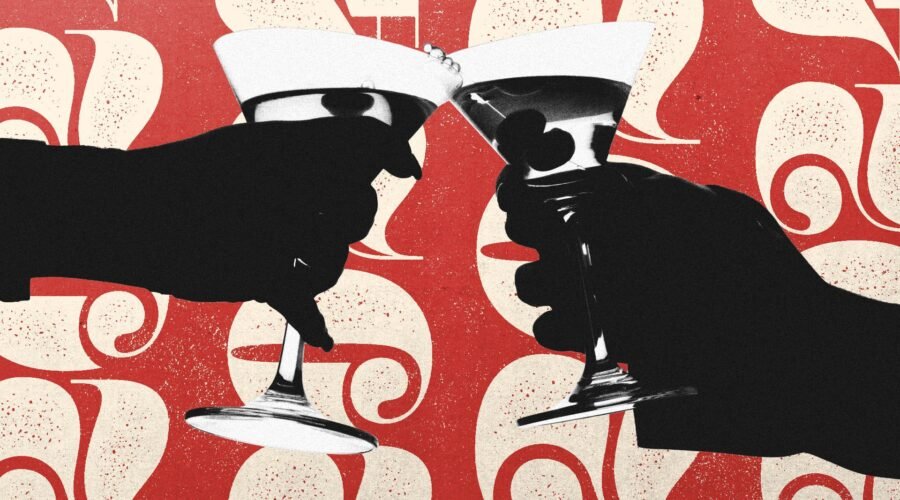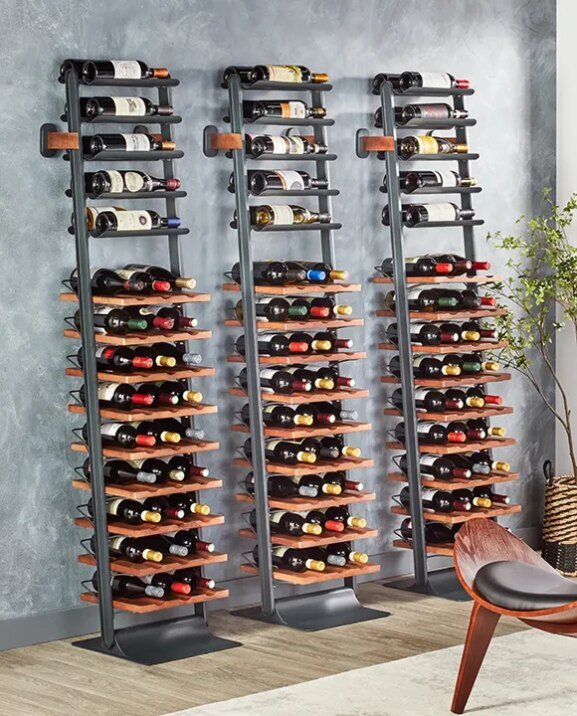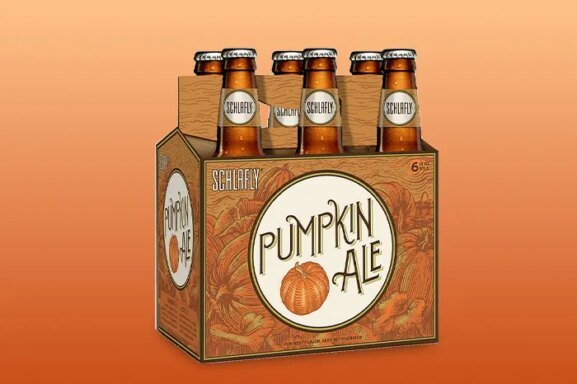Culture: What Drink Trends Will Reign Supreme in 2024? Our Predictions
The end of every year begs the question—what’s coming next? What natural disasters are going to rattle our world? Is there going to be another war? Will weather-related issues impact our lives and businesses? Will more banks shut down? Could there be a repeat of 2020?
Unfortunately, these sorts of big anxiety-plagued questions are impossible to predict. But there are smaller questions—within the realm of human control—that are far easier to forecast. A great (and very relevant) example: What drink trends are coming next?
With 2023 drawing to a close, we reached out to a few forward-thinking industry pros for thoughts as to what might transpire in the coming months in the beverage space. From a full-court press on courting Gen Z—which already is imbibing less compared to other generations—to bars focusing on technology to build “immersive” experiences and automate other aspects, plus far-reaching ripples created by macro events like rising prices and the work-from-home revolution, here’s what the pros see on the horizon.
(Curious to see how did we do in 2023? Find those predictions here.)
You May Also Like: TikTok Creators Bring Barrier-Free Joy to Wine
1. Happy Hour Will Return—With a Vengeance
Inflation is on the rise, and many consumers are feeling the squeeze. Translation: Put away the $25 martinis. People are looking for ways to save (or at least not over-spend), and that price sensitivity is likely to continue for a while.
“The price of going out has skyrocketed… There is this exhaustion toward the $16, $18, $20 cocktail,” says Arvid Brown, owner and bar manager, Room For Improvement in Portland, Maine. “People are coming down on the side of wanting things that are cheaper, more familiar and easier to understand—and which don’t come with such a risky price tag.”
2. The Agave Juggernaut Will Continue
We’ve said this for the past couple of years, but it continues to be true. Vodka still remains the nation’s number-one selling spirit, according to the Distilled Spirits Council of the United States (DISCUS), but tequila is creeping closer and closer to the leader mark, with sales rising 17.2% in 2022 (2023 stats are not yet available). Vodka sales held flat in the same period. In addition to an ongoing parade of celebrity-backed brands, part of the allure is the wide breadth of price points and expressions, from affordable blancos to the rise of longer-aged luxury añejos and extra-añejos. “One of the keys to tequila’s U.S. growth has been distillers’ ability to offer a product for every budget and occasion,” DISCUS says.
Add to that a more general wave of interest in spirits (hello, mezcal and sotol), liqueurs and cocktails from Central America, South America and the Caribbean. They’re fast gaining traction with consumers, according to Datassential. Speaking of which…
3. The Carajillo Might be 2024’s Cocktail of the Year
The simple blend of espresso and Licor 43 started in Spain, but it has become increasingly popular in Mexico (as Nils Bernstein observes here) as well as in the U.S. It seems about right, as espresso martini-mania continues, that another coffee drink is poised to ascend. Further evidence: According to Yelp’s 2024 Food & Drink Trends report, searches for “carajillo” skyrocketed 118% this year.
4. Low-Proof and No-Proof Become Part of the Norm
Compared to previous years, where predictions were that low and no-alcohol drinks were “on the rise” or “here to stay,” looking ahead this segment is officially part of the beverage landscape. Not having these options on drink menus will seem a glaring omission.
“Everyone’s expanding their low-abv stuff,” notes Orlando Franklin McCray, bar director of Brooklyn’s Nightmoves. “Consumers are more and more okay with not drinking, to have something that’s a mocktail at a bar that’s supposed to resemble a cocktail.” For example, a non-alcoholic fermented passionfruit soda is a popular drink at his bar.
The proliferation of NA “spirits” and other ingredients also has helped expand drink options. At the same time, rising demand from consumers has “forced mixologists to be more creative and mindful in their mixology,” says Raven Randolph, assistant director of food & beverage at Mango House Seychelles, yielding “far more inclusive” drink options.

5. What Are You Having, Gen Z?
All eyes are focused on the youngest generation to come of drinking age. While their numbers are fewer than millennials, the proclivities of Gen Z are key to the longevity of the alcohol beverage industry. In general, it’s a generation described as open to new experiences and global flavors in food and drink, and which tends to find and share drinks via social media (in other words, TikTok-driven drink trends aren’t going anywhere).
However, some trend-watchers note that Gen Z’s consumption choices are more fragmented than other generations. Functional and “wellness” beverages, as well as low- and no-alcohol options are part of the mix. “Consumers have more choices, including cannabis,” says Dale Stratton and Danny Brager, analysts for WSWA SipSource.
You May Also Like: Millennials and Gen Z Could Save the Wine Industry
6. Transparency Is (Still) Key
While not a new trend, expect consumers to continue to seek sustainable options in their glasses. “For 2024, I anticipate guests will care more about transparency in what they drink,” says Paul McGee, partner for the soon-to-open Papaya Club in Orlando, Florida. “Not only will they want their cocktail to be made with spirits that taste good, but spirits that are good for the planet and good for the workers making them. Sustainability, ethical practices and the story behind what’s inside a bottle will matter.”
However, spirits producers and others had better be ready to show the work to skeptical consumers. According to a new study from Mintel, 60% of U.S. consumers agree that “many companies are just pretending to be sustainable.”
7. The “Theatre of the Bar” Returns
Expect to hear more about “immersive” bars and “experiential” drinks. That might manifest in a broad range of ways, from Instagram-catnip theme bars to venues that offer experiences beyond just drinks (check out this London-based list to see what we mean). Here in the U.S., our money’s on pickleball bars. Over-the-top drinks are part of this trend, too.
“It’s not just a sip, it’s a sensorial experience,” explains Paul Broadbent, CEO of Proof & Company. “Much like the theatrical elements in the culinary world, the presentation of cocktails will incorporate heightened drama and flair.”

8. Your Next Cocktail Might Not Be at a Bar
Thanks in part to the widespread availability of ready-to-drink (RTD) cocktails, consumers are finding it easier than ever to find cocktails in portable formats. While some bars are struggling to return to pre-pandemic sales levels, explain Dale Stratton and Danny Brager, analysts for WSWA SipSource, “recreational channels” like golf clubs, entertainment and sports venues and private clubs are doing well. Alcoholic beverages, RTD and otherwise, also are selling briskly in planes, train stations and other transportation-related spaces, as more people return to travel, they add.
9. Sunday Will Be the New Saturday
The rise in remote and hybrid working has shifted sales patterns at bars. Specifically, according to data from GB Drinks at CGA by NielsenIQ, Saturdays traditionally have accounted for 28% of the total weekly value in the market. However, Fridays, Saturdays, Wednesdays and Thursdays are all losing their share to Sundays.
In other words, more people work from home on Fridays and Mondays, returning to the office during the middle of the week.
“People seem to be more inclined to enjoy themselves on Sundays—perhaps because they don’t have to worry about work the next day,” says GB client director Paul Bolton. “A bit of a hangover might not seem like such a bad thing when you have the luxury of a commute-free Monday.”
You May Also Like: We Asked an A.I. Chatbot to Write a Drinks Review. Here’s What Happened
10. Wild Card: Better Drinking Through Artificial Intelligence?
Questions remain as to how artificial intelligence, one of the most-watched tech developments of the past couple of years, will play out in the beverage space. So far, it’s been a dud in terms of writing recipes (and spirits reviews), but it might have implications in terms of taking orders at bars, helping customers select a bottle at a retailer or online (we’re keeping an eye on Preferabli, which claims to do just that, functioning as a “virtual somm”) and generating flavor profiles that distilleries can use to make blending and other decisions, as Sweden’s Mackmyra has done with its Inteligens whiskey, a collaboration with Fourkind, a Finnish technology consultancy. Please, just keep the cocktail-making robots at bay.
Published: November 22, 2023


